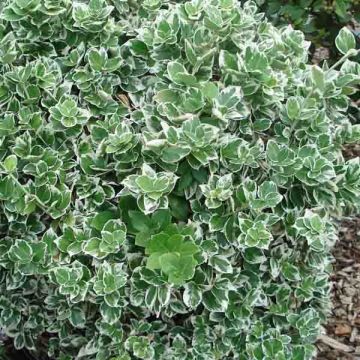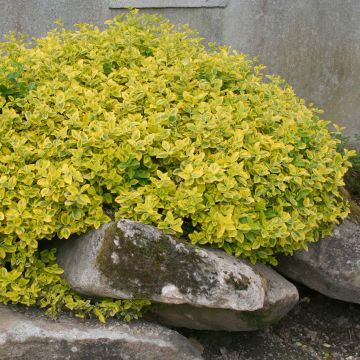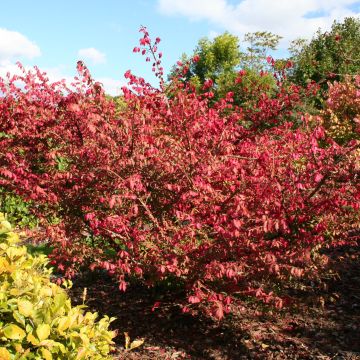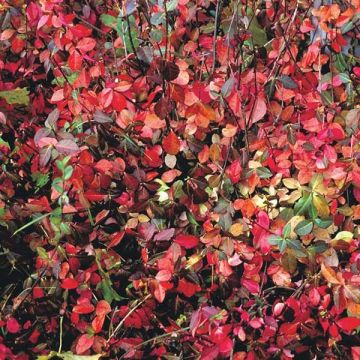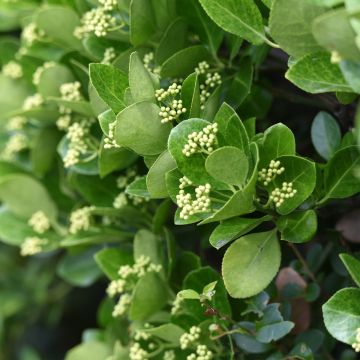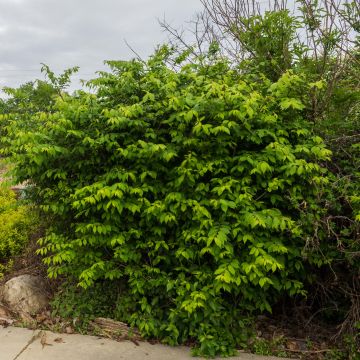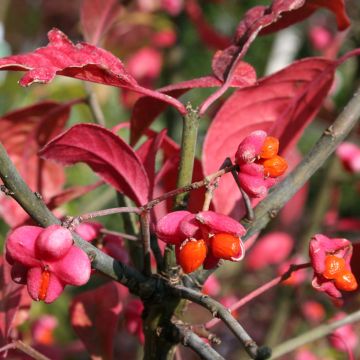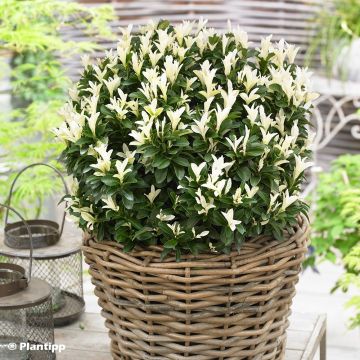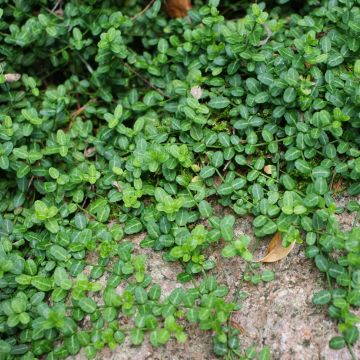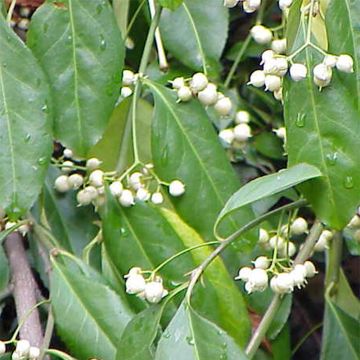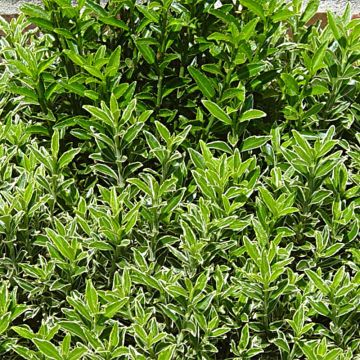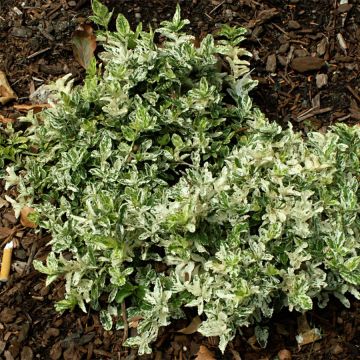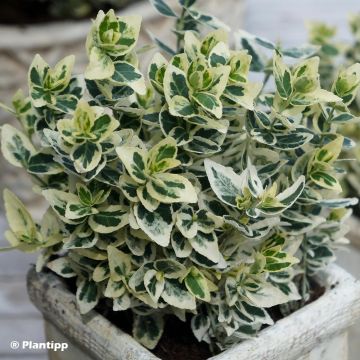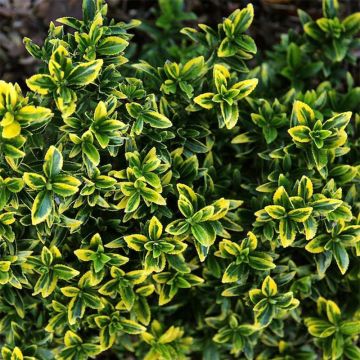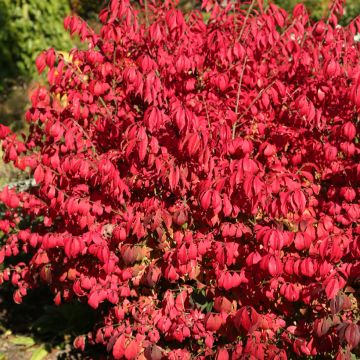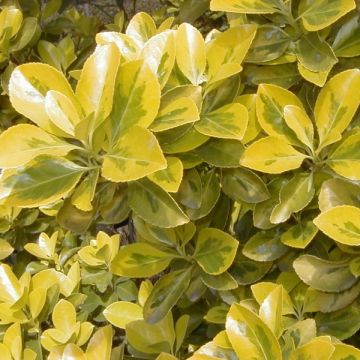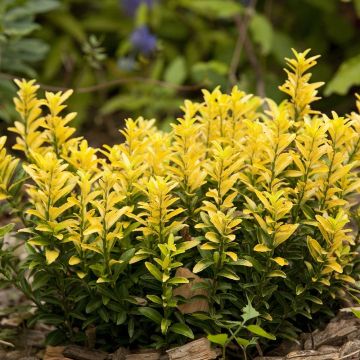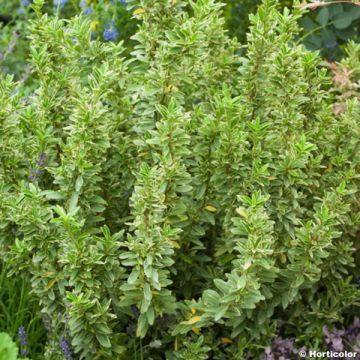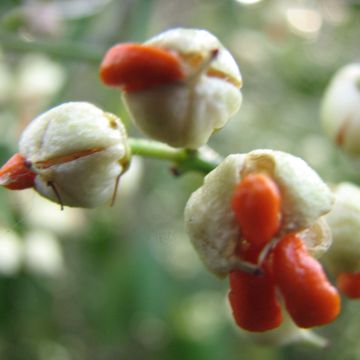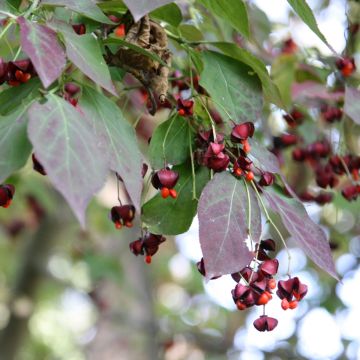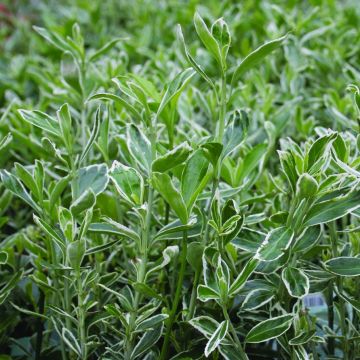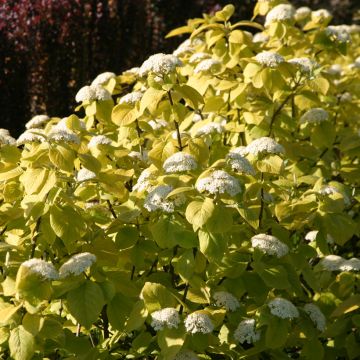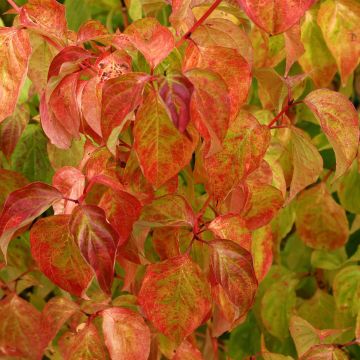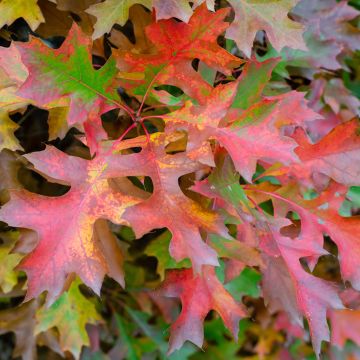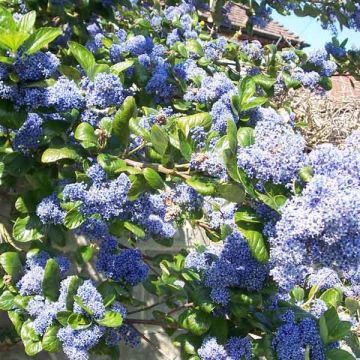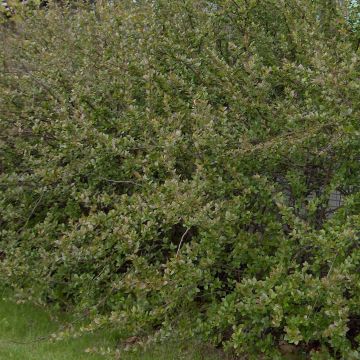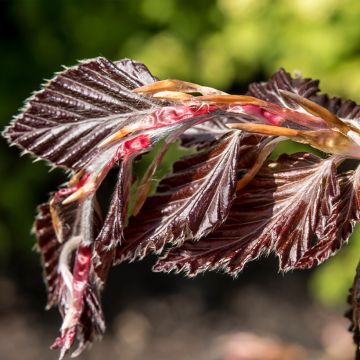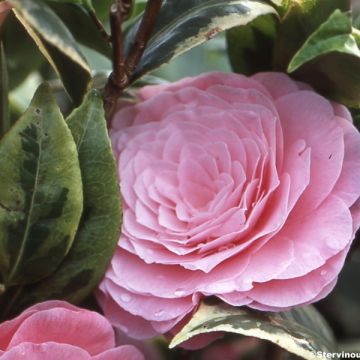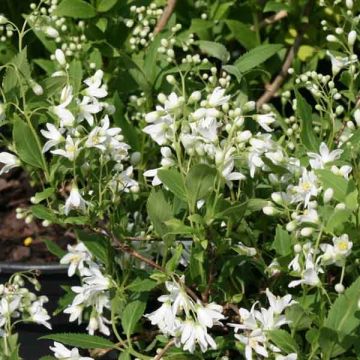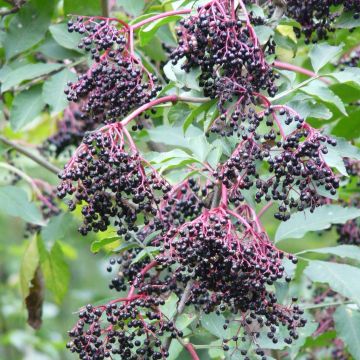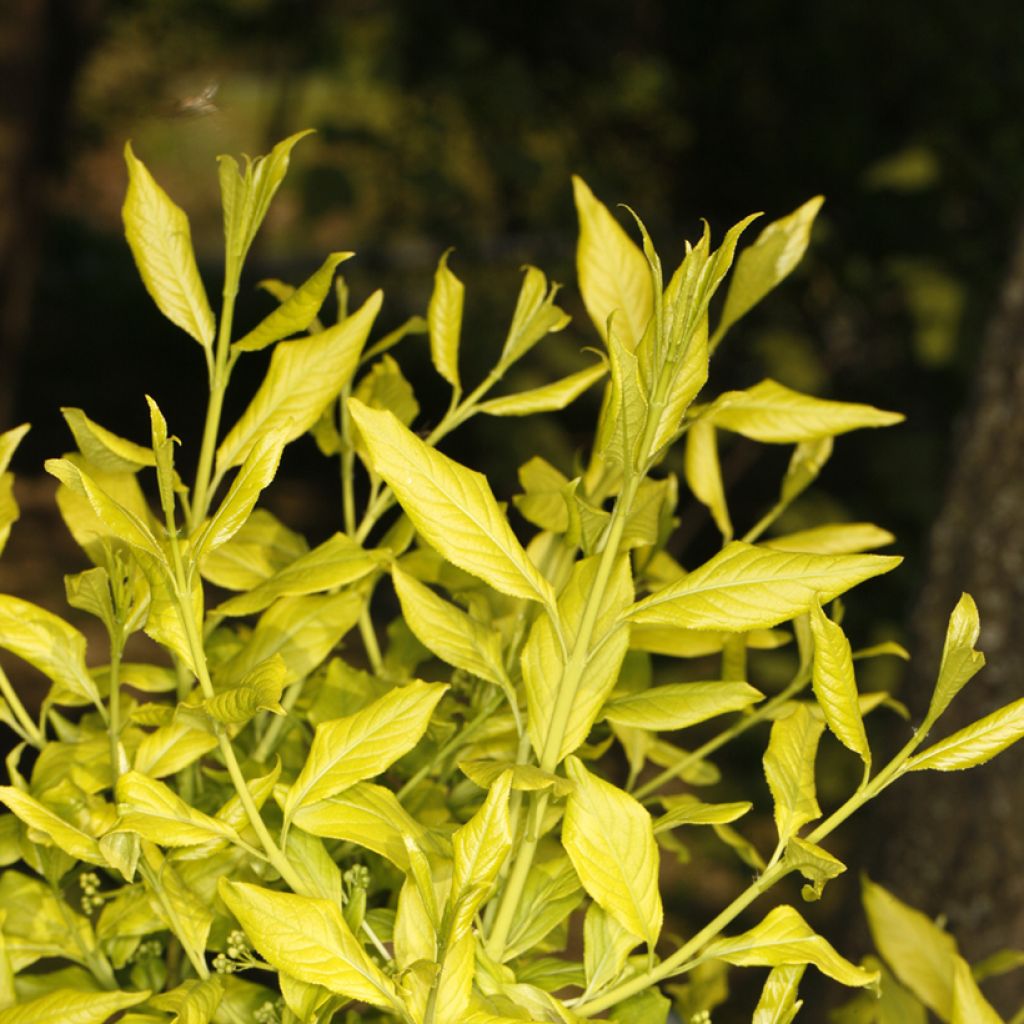

Euonymus europaeus Chrysophyllus
Euonymus europaeus Chrysophyllus
Euonymus europaeus Chrysophyllus
Why not try an alternative variety in stock?
View all →This plant carries a 24 months recovery warranty
More information
We guarantee the quality of our plants for a full growing cycle, and will replace at our expense any plant that fails to recover under normal climatic and planting conditions.
Oversize package: home delivery by special carrier from €6.90 per order..
Express home delivery from €8.90.
Does this plant fit my garden?
Set up your Plantfit profile →
Description
Euonymus europaeus 'Chrysophyllus' is a variety of European spindle or bishop's hat that stands out for its intense yellow spring foliage. Its brightly coloured fruits cause the branches to arch at the end of summer and throughout much of winter. The foliage takes on warm tones as soon as the first chill arrives, harmonising with all the colours of autumn. This deciduous bush is ideal for informal hedges or hedgerows, shrub borders, or as a specimen plant to enjoy its colours throughout the seasons.
Euonymus europaeus 'Chrysophyllus', discovered in Hungary, was introduced to the horticultural market around 1921 by L. Späth of Berlin. The species belongs to the Celastraceae family. The 'Chrysophyllus' cultivar is rarely available for sale. It is a fairly fast-growing bush with an upright and slightly spreading habit. When fully grown, the plant will reach approximately 2.50m in height and 2m in width. This spindle is not invasive. You can even lightly prune it to give it a more "tidy" silhouette.
Its branches, with greyish and slightly fissured bark, bear lanceolate leaves measuring 5 to 7cm long, with barely toothed edges. They change from bright yellow in spring to yellowish-green in summer. Towards the end of the season, the foliage takes on shades of yellow, orange, and a touch of red, depending on the climate. In April-May, the small flowers appear. They do not exceed 1cm in diameter, are white with yellow and green highlights and consist of 4 tiny petals and a green centre. Grouped in cymes, they attract pollinators and gradually form unique and highly decorative fruits. The capsule, formed by 4 dark pink lobes, will slowly open to reveal bright orange berries. They are toxic, as are other parts of the bush: leaves and bark. However, birds will feed on them during the winter.
Euonymus 'Chrysophyllus' is hardy and prefers full sun, but also thrives in partial shade. It is an undemanding bush. It can be used in hedgerows, combined with hawthorns, wayfaring trees, smokebush, medlar trees, and ornamental fruiting roses, in borders or as a standalone specimen in a collector's garden. Its very yellow foliage in spring breaks the monotony of a grove or a rural hedge. This bush provides shelter and food for the small fauna of the garden.
Report an error about the product description
Plant habit
Flowering
Foliage
Botanical data
Euonymus
europaeus
Chrysophyllus
Celastraceae
Western Europe
Other Euonymus - Spindle tree
Planting and care
Hardy Euonymus 'Chrysophyllus' prefers a sunny exposure, but will also thrive in partial shade. It adapts to any well-prepared and loosened soil. Once well-rooted, the bush shows resistance to moderate summer drought periods. Prune if necessary in March.
Planting period
Intended location
Care
This item has not been reviewed yet - be the first to leave a review about it.
Hedge shrubs
Haven't found what you were looking for?
Hardiness is the lowest winter temperature a plant can endure without suffering serious damage or even dying. However, hardiness is affected by location (a sheltered area, such as a patio), protection (winter cover) and soil type (hardiness is improved by well-drained soil).

Photo Sharing Terms & Conditions
In order to encourage gardeners to interact and share their experiences, Promesse de fleurs offers various media enabling content to be uploaded onto its Site - in particular via the ‘Photo sharing’ module.
The User agrees to refrain from:
- Posting any content that is illegal, prejudicial, insulting, racist, inciteful to hatred, revisionist, contrary to public decency, that infringes on privacy or on the privacy rights of third parties, in particular the publicity rights of persons and goods, intellectual property rights, or the right to privacy.
- Submitting content on behalf of a third party;
- Impersonate the identity of a third party and/or publish any personal information about a third party;
In general, the User undertakes to refrain from any unethical behaviour.
All Content (in particular text, comments, files, images, photos, videos, creative works, etc.), which may be subject to property or intellectual property rights, image or other private rights, shall remain the property of the User, subject to the limited rights granted by the terms of the licence granted by Promesse de fleurs as stated below. Users are at liberty to publish or not to publish such Content on the Site, notably via the ‘Photo Sharing’ facility, and accept that this Content shall be made public and freely accessible, notably on the Internet.
Users further acknowledge, undertake to have ,and guarantee that they hold all necessary rights and permissions to publish such material on the Site, in particular with regard to the legislation in force pertaining to any privacy, property, intellectual property, image, or contractual rights, or rights of any other nature. By publishing such Content on the Site, Users acknowledge accepting full liability as publishers of the Content within the meaning of the law, and grant Promesse de fleurs, free of charge, an inclusive, worldwide licence for the said Content for the entire duration of its publication, including all reproduction, representation, up/downloading, displaying, performing, transmission, and storage rights.
Users also grant permission for their name to be linked to the Content and accept that this link may not always be made available.
By engaging in posting material, Users consent to their Content becoming automatically accessible on the Internet, in particular on other sites and/or blogs and/or web pages of the Promesse de fleurs site, including in particular social pages and the Promesse de fleurs catalogue.
Users may secure the removal of entrusted content free of charge by issuing a simple request via our contact form.
The flowering period indicated on our website applies to countries and regions located in USDA zone 8 (France, the United Kingdom, Ireland, the Netherlands, etc.)
It will vary according to where you live:
- In zones 9 to 10 (Italy, Spain, Greece, etc.), flowering will occur about 2 to 4 weeks earlier.
- In zones 6 to 7 (Germany, Poland, Slovenia, and lower mountainous regions), flowering will be delayed by 2 to 3 weeks.
- In zone 5 (Central Europe, Scandinavia), blooming will be delayed by 3 to 5 weeks.
In temperate climates, pruning of spring-flowering shrubs (forsythia, spireas, etc.) should be done just after flowering.
Pruning of summer-flowering shrubs (Indian Lilac, Perovskia, etc.) can be done in winter or spring.
In cold regions as well as with frost-sensitive plants, avoid pruning too early when severe frosts may still occur.
The planting period indicated on our website applies to countries and regions located in USDA zone 8 (France, United Kingdom, Ireland, Netherlands).
It will vary according to where you live:
- In Mediterranean zones (Marseille, Madrid, Milan, etc.), autumn and winter are the best planting periods.
- In continental zones (Strasbourg, Munich, Vienna, etc.), delay planting by 2 to 3 weeks in spring and bring it forward by 2 to 4 weeks in autumn.
- In mountainous regions (the Alps, Pyrenees, Carpathians, etc.), it is best to plant in late spring (May-June) or late summer (August-September).
The harvesting period indicated on our website applies to countries and regions in USDA zone 8 (France, England, Ireland, the Netherlands).
In colder areas (Scandinavia, Poland, Austria...) fruit and vegetable harvests are likely to be delayed by 3-4 weeks.
In warmer areas (Italy, Spain, Greece, etc.), harvesting will probably take place earlier, depending on weather conditions.
The sowing periods indicated on our website apply to countries and regions within USDA Zone 8 (France, UK, Ireland, Netherlands).
In colder areas (Scandinavia, Poland, Austria...), delay any outdoor sowing by 3-4 weeks, or sow under glass.
In warmer climes (Italy, Spain, Greece, etc.), bring outdoor sowing forward by a few weeks.


































